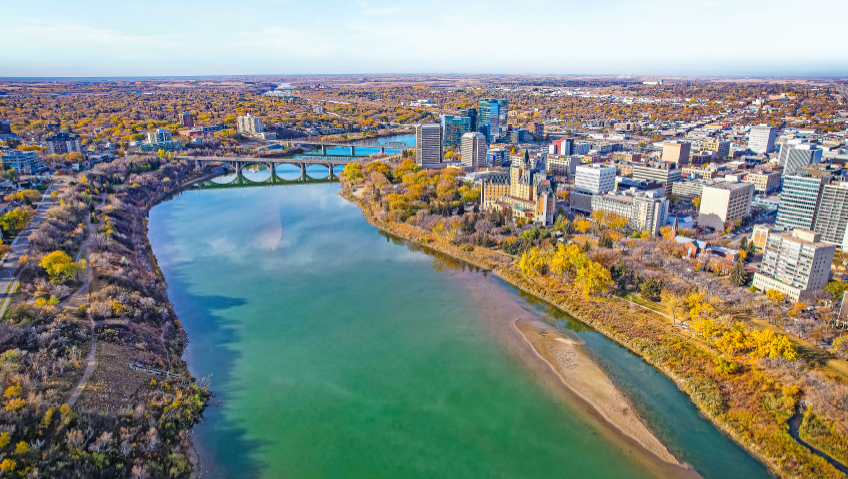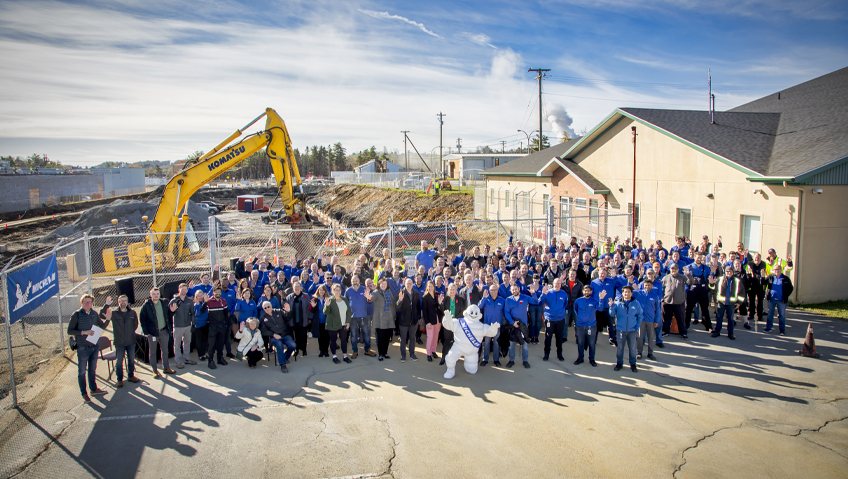The “Alberta Is Calling” campaign, promoting the province and all it has to offer, has been a resounding success thanks to strong market conditions including accelerated oil prices and wage growth tied to the booming energy and natural resources sectors.
The province’s residents enjoy an enviable quality of life, low cost of living, zero percent provincial sales tax, and some of the most beautiful vistas in Canada, if not the world, which is once again causing the population to grow. But that growth comes with its fair share of challenges.
Measuring growth
When oil prices soared in the 1970s, Alberta experienced exceptional population growth, with people moving to the province to take advantage of the new windfall. This boom was inevitably met with a bust which slowed things down during the 1980s, a period marked by bailouts and economic challenges.
Sure enough, the hard times didn’t last and in the 1990s, forward momentum carried the province for another decade, until the economic blow that was the global financial crisis. Between 2009-2010 and 2015-2018, population growth slowed and negative net interprovincial migration caused an efflux of people, which the provincial government has been working to combat.
While much of the world shut down during the pandemic, Alberta was open for business. The province experienced record levels of growth fueled in large part by accelerated oil prices, interprovincial migration, specifically from Ontario and B.C., and non-permanent immigration. As a result, Alberta leads all provincial growth in Canada with a rate of four percent. StatsCan reports that approximately 74,000 people moved from B.C. and Ontario to Alberta last year, while the number of non-permanent residents is the highest since data first became available in 1971.
From an economic standpoint, growth is welcome. However, with this growth comes its share of problems including increased demand for infrastructure, services, and housing, of which the latter could be a major problem.
Pressure on housing
Population growth is good if you have somewhere to put people. Without question, the cost of living and housing is a major attraction for those relocating to Alberta, but there’s a good chance that shortly, supply will not satisfy demand and prices will go up.
In 2022, demand for housing in Calgary was the highest since 1990 when the city began collecting data. New housing inventory continues to be added, but vacancy rates, particularly for rental housing, are low, driving prices up.
Calgary’s rent prices have increased nearly 40 percent since 2020 and for renters seeking accommodation, the market is competitive and the windows of opportunity small. Similarly, rent prices in Edmonton increased by 17.1 percent to an average of $1,479 per month, which is still lower than many large cities in Canada but indicative of a dangerous upward trend.
The trick to maintaining low costs of living and reasonable housing prices (relative to other provinces) is to ensure adequate supply. The goal is to keep prices down through the provision of ample choices, smart development decisions, and keen policies. The challenge, particularly for places like Calgary, is ensuring supply while controlling the sprawl. Over the past five years, over 60 percent of all new units built in the city were new communities, many taking root in the city’s northwest end.
Certainly, the city is building houses, but not at a sufficient rate, especially for a city expected to grow to a population of two million over the next 50 to 60 years.
Despite having 14,770 housing starts in 2022, a record for the city thanks to bylaw changes to increase housing density and diversity, housing inventory was still at its lowest since the boom of 2006, which preceded the mortgage crisis in the U.S. that led to the global financial crisis. According to the Canada Mortgage and Housing Corporation (CMHC), Alberta will need 20,000 more new housing units than currently being produced to ensure affordability.
The Business Council of Alberta estimates that for every 20,000 new households in the province, only 8,000 new homes are built. The need for affordable housing is expected to reach 100,000 households by 2026 thanks to a perfect storm of population growth.
For many, rising costs are putting affordable housing beyond reach while also pushing the provision of services and resources to the brink of capacity. In addition to more housing, governments will be forced to expand infrastructure and services to sustain the growing population.
Developing priorities
Cities like Calgary are faced with some serious design challenges. For years the city dealt with extremely high rates of commercial vacancy in its downtown core, as many operations were shuttered during the pandemic.
To deal with this historic rate of vacancy and the impending housing crisis, Calgary changed its bylaws and created incentive programs to convert unused office space into residential units, a feat even more challenging than one would anticipate. While the program was a success, with the city having to cut off applications, new residential units in the city’s core introduced new challenges to infrastructure and services. The downtown is a commercial centre designed for the working population during the day, with suitable retail and restaurant options, but short on grocery stores, medical centres, and schools to service a growing population around the clock.
These challenges aren’t limited to the big cities, either. Airdrie, close to Calgary, had its population surpass 80,000 in 2023, while Leduc, near Edmonton, has seen nine percent population growth since 2019.
Smaller communities have limited funds and must quickly ensure that the needs of their residents are met. From adding police and fire stations, schools and medical centres, to expanding infrastructure and services, these improvements come at a price.
Base funding for municipalities delivered through the Local Government Fiscal Framework will increase by 14 percent to $820 million in 2025 to help sustain the growth, particularly for smaller communities. Some challenges, however, cannot be solved by money alone. In places like Airdrie and Okotoks, water supply constraints mean that growth must be managed so as not to outpace the availability of natural resources.
What’s next for Alberta?
Even with its record growth leading to a record low housing inventory, Calgary is poised to fare better than the rest of the province and country, but the strength of the market likely can’t be sustained long-term. While the Canadian economy has avoided recession and the outlook is generally positive thanks to the strength of the energy sector, skilled labour shortages and high interest rates are limiting its potential.
The energy sector typically insulates the Canadian economy from economic freefall, but in times of global recession, the province, and its major cities like Calgary, are particularly impacted for the worse. Luckily, crude oil exports are expected to continue to grow into 2028, though at a slower pace than the market is used to.
Likewise, with employment growth and real wages on the rise, particularly in manufacturing, and an increase of professional, scientific, and technical positions driven by growth in demand in the energy and technology sectors, earnings will be boosted and so too will consumer spending through 2024.
Despite employment and wage growth, any rise in earnings or consumer spending is likely to be offset by elevated inflation, high interest rates, and Canadian debt loads, though the outlook is that interest rates will begin to come down and spending will continue to increase, while population growth will slow.
The question is, will this slowdown be temporary or is it indicative of the shifting of economic cycles in the province once again? When interest rates are lowered, will a new influx of buyers spike demand in an already tapped housing market?
Only time will tell, but if Alberta wants to maintain the quality of life it has come to be known for—the value proposition upon which it continues to market itself and grow—it will have to ensure that development is balanced and adequately meets the needs of its growing population.






